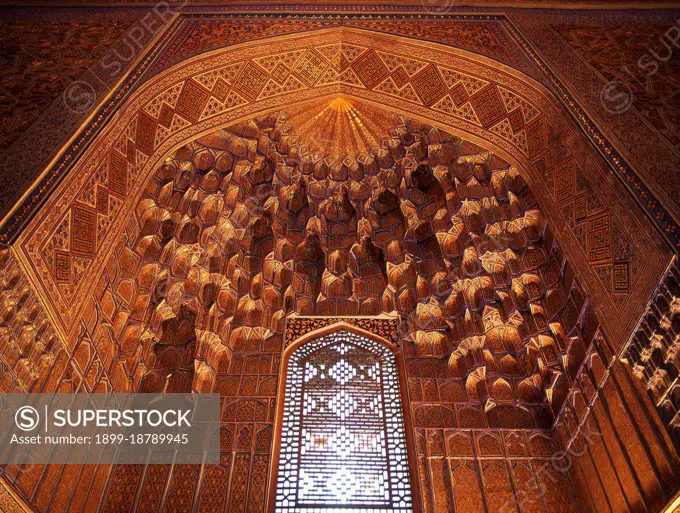The Gur-e Amir or Guri Amir is the mausoleum of the Asian conqueror Tamerlane (also known as Timur) in Samarkand, Uzbekistan. It occupies an important place in the history of Persian Architecture as the precursor and model for later great Mughal architecture tombs, including Humayun's Tomb in Delhi and the Taj Mahal in Agra, built by Timur's descendants, the ruling Mughal dynasty of North India. It has been heavily restored. Gur-e Amir is Persian for 'Tomb of the King'. This architectural complex with its azure dome contains the tombs of Tamerlane, his sons Shah Rukh and Miran Shah and grandsons Ulugh Beg and Muhammad Sultan. Also honoured with a place in the tomb is Timur's teacher Sayyid Baraka.
SuperStock offers millions of photos, videos, and stock assets to creatives around the world. This image of The Gur-e Amir or Guri Amir is the mausoleum of the Asian conqueror Tamerlane (also known as Timur) in Samarkand, Uzbekistan. It occupies an important place in the history of Persian Architecture as the precursor and model for later great Mughal architecture tombs, including Humayun's Tomb in Delhi and the Taj Mahal in Agra, built by Timur's descendants, the ruling Mughal dynasty of North India. It has been heavily restored. Gur-e Amir is Persian for 'Tomb of the King'. This architectural complex with its azure dome contains the tombs of Tamerlane, his sons Shah Rukh and Miran Shah and grandsons Ulugh Beg and Muhammad Sultan. Also honoured with a place in the tomb is Timur's teacher Sayyid Baraka. by Pictures From History/Universal Images is available for licensing today.
DETAILS
Image Number: 1899-18789945Rights ManagedCredit Line:Pictures From History/Universal Images/SuperStockCollection:Universal Images Contributor:Pictures From History Model Release:NoProperty Release:NoResolution:4818×3646
